Like all other animals, dogs require water to remain healthy. If they aren’t provided with enough, they can become seriously ill. In fact, severe dehydration can even result in death.
Dehydration is best treated through prevention, but there are a few things you can do to help rehydrate your dog when necessary.
We’ll discuss the dangers of dehydration, the best ways to prevent your dog from becoming dehydrated, and how to check your dog’s hydration level below.
But first, let’s talk about the steps you’ll want to take if your dog starts suffering from a water deficit.
Steps to Rehydrate a Dehydrated Canine: Dog Dehydration Treatment
If you think that your dog is dehydrated, employ the steps listed below:
- Get out of the heat. As soon as you think your dog is dehydrated, move out of the heat. Ideally, you’ll want to move to an air-conditioned space (be it your home or car), but if that is not possible, at least move to a shady spot.
- Assess your dog’s condition. Carefully examine your dog by looking for the signs of dehydration and performing the dehydration tests discussed below.
- Head to the vet or start rehydrating your pooch. If your pooch appears to be severely dehydrated, contact your vet at once. Serious dehydration is a medical emergency, which you don’t want to take lightly. But, if your dog’s dehydration appears to be relatively mild, just start rehydrating your pooch. You can do so by simply offering water, but you can also offer an electrolyte solution (such as unflavored Pedialyte) to your dog to help replace any electrolytes that have been lost. Ideally, you’ll contact your vet first and solicit his or her advice about the amount you should offer, but a general rule of thumb is 1/8 cup per hour for small dogs or ¼ cup per hour for large dogs.
- Monitor your pet to ensure he continues to recover nicely. Keep an eye on your pet for the next several hours and make sure he starts to act normally again. If you feel like he is experiencing any lingering effects at all, contact your vet immediately.
- Hang out indoors for the rest of the day. It’s a good idea to take it easy for the rest of the day (and maybe even the next day) after your pup suffers from mild dehydration. Just chill out on the couch with the AC cranked up and let your pooch catch up on his favorite TV show.
Don’t Let Your Dog Drink Too Much Too Fast
Use caution when letting your dog drink water or Pedialyte after he’s become dehydrated.
If he gulps down a significant quantity of water, he could get sick and end up vomiting. This means he’ll not only lose all of the water he just drank but some additional liquid (in the form of stomach fluids) too.
So, try to space out your dog’s drinking opportunities. The exact amount you should let him consume at a time will vary based on his size and the extent of his dehydration, so you’ll need to use your best judgment and err on the side of caution.
For example, if your dog can normally polish off 12 ounces of water in one sitting, you may want to start by letting him have about 4 ounces. Wait about 5 to 10 minutes, make sure he doesn’t vomit, and then let him have another 4 ounces or so.
Repeat this process three or four times, until you’re confident that your dog isn’t going to gulp the water down too quickly or vomit.
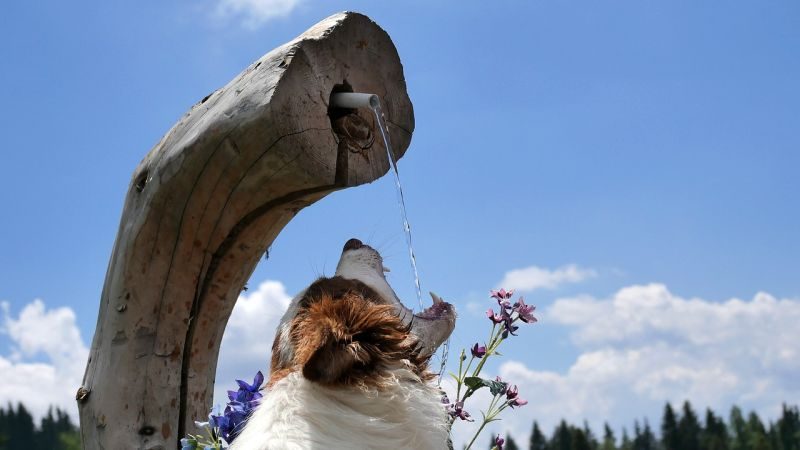
How Much Water Do Dogs Need?
Technically speaking, your dog needs to consume enough water to enable his body to function properly and offset that which he loses during the day.
Dogs lose water in a variety of ways, but they primarily do so via the following four ways:
- Urination
- Breathing
- Pooping
- Sweating
But this is of little help to the average dog owner. There’s simply no simple way to determine how much water your dog loses during the day.
Additionally, because all dogs are individuals, their water requirements can vary significantly. Some dogs may lose more water than others while panting. Others may simply pee more than normal.
However, many vets, including Dr. Scott Loveless, DVM, subscribe to a pretty simple formula: For every pound of body weight, your dog needs about one ounce of water per day. In other words, a 50-pound dog needs about 50 ounces of water each day.
Dog Dehydration Prevention: The Best Solution
Like so many other health problems that afflict dogs, dehydration is much easier to prevent than to treat. Just try to employ the following three tips to help side-step the dehydration problem entirely.
1. Keep a big bowl of water available at all times.
This is so simple that it hardly deserves being mentioned, but make sure your dog always has water available.
If you must leave your dog unattended for long periods of time, select a really big dish (this one holds more than 2 gallons), set out multiple dishes, or hook your pooch up with a bowl that automatically refills as your dog drinks.
2. Bring a water bottle and travel bowl whenever heading out with your dog.
It’s always wise to bring a water bottle and bowl when you head out the door with your pup.
This is obviously a good idea if you’re heading off into the wilderness with your pooch, but it’s even a good idea when you’re just heading to the dog park down the street.
You never know when you’ll be stuck in traffic for hours, your car will break down, or the water fountain at the park will be out of order.
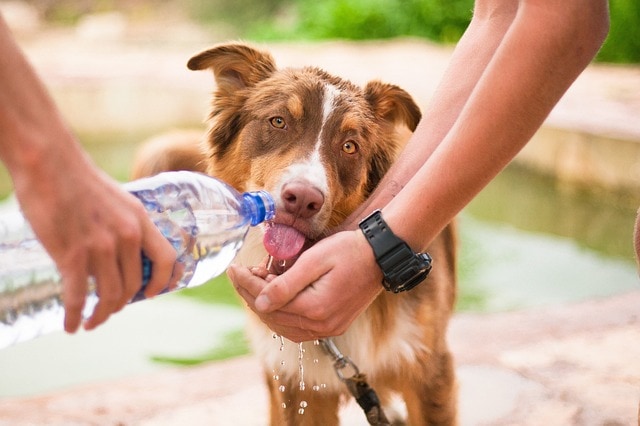
There are a number of water bowls and bottles designed for dogs on the go, but we like the Highwave AutoDogMug, as it is an easy-to-use and completely self-contained option (it even fits inside a standard 20-ounce cup holder, so you can use it in the car).
We also review several other dog water bottles here, so be sure to give that page a look.
3. Limit your pup’s exposure to high temperatures.
High temperatures will accelerate the rate at which your dog loses water.
Consequently, you’ll want to limit your dog’s exposure to hot weather and take extra precautions to ensure he stays hydrated. Some breeds tolerate high temperatures better than others, but all dogs can suffer when forced to endure high temperatures for a long period of time.
If you are worried about taking your pooch out during hot weather, you may want to consider picking up a cooling vest, to help shield him from the heat.
Special Tips for Poor Drinkers: How to Trick a Dog into Drinking Water
For whatever reason, some dogs simply fail to drink enough water on a daily basis.
These dogs are at increased risk of dehydration, so owners of dogs who don’t like to drink a lot of water are wise to employ a few additional measures to help prevent water deficits.
Provide Your Dog with Moving Water
For whatever reason, some dogs prefer drinking moving water (this is actually a pretty common phenomenon in the greater animal kingdom – some animals don’t appear to recognize standing water).
So, if your dog doesn’t seem to drink enough water, consider grabbing a dog water fountain, which may encourage your pooch to drink more.
Add Something Tasty to the Water: Flavored Dog Water Recipes
You may be able to encourage your dog to drink more water by adding something tasty to his bowl to give the water some flavor.
The best things to use are small pieces of fruit or a splash of pure fruit juice.

Strawberry or apple are probably two of the most appealing things to try, but a few watermelon cubes may tempt your pooch too (just avoid grapes or grape juices – they’re toxic to dogs).
Alternatively, you can add a bit of low-sodium chicken broth to your dog’s water dish. This will convince most dogs to drink, and the salt and calories contained in the broth will likely help your dog feel better too.
You needn’t add much broth to your dog’s water – just a splash or two will help make the water more appetizing.
Give Your Dog Frozen Treats
Frozen, water-rich treats can be helpful for getting more water into your pup’s system.
We’re not talking about the yogurt- or peanut-butter-based treats that many owners make (there’s nothing wrong with them, but they don’t have very much water in them).
Instead, we’re talking about things like frozen fruit juices (all-natural, dog-safe, non-sweetened varieties only — never give dogs juices containing grapes or xylitol)
PetSafe’s Chilly Penguin is a can be useful for this – fill up the compartment with fruit juice or broth, pop it in the freezer, and watch your dog lap away!
- FROZEN FUN: The PetSafe Chilly Penguin Freezable Treat Holding Toy holds your dog's favorite frozen...
- SAFE AND SATISFYING: The Chilly Penguin gives you the option on the treat ingredients so you know...
- EASY TO CLEAN: The Chilly Penguin toy can be easily cleaned by putting it in the top rack of your...
- CUTE COMPARTMENT: The adorable snowflake-shaped design helps hold in flavored water, broth or your...
Just be sure that you always monitor your dog when he’s enjoying frozen treats. You don’t want him to bite the ice cubes, as this can lead to choking or oral injuries.
Consider Switching to a Canned Food
In contrast to kibbles, which normally have very little moisture content, wet or canned foods are usually chock full of water. So, consider switching to a canned diet if your dog is a poor drinker.
You may even consider just using canned foods as a topper for your pup’s normal kibble – this will still increase the amount of water your dog consumes on a daily basis.
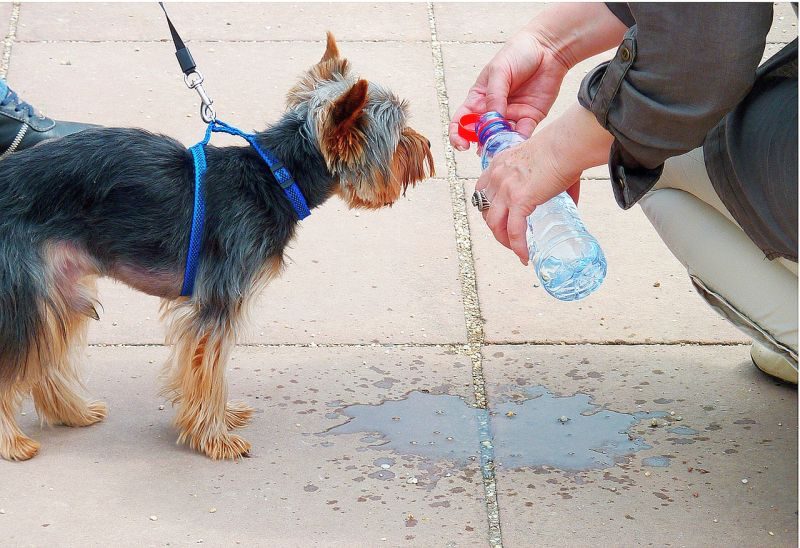
Signs of Dehydration in Dogs
Despite your best efforts, you still may one day be faced with a dehydrated dog. And while mild dehydration is typically fairly easy to address, serious dehydration is a medical emergency.
Consequently, you’ll need to familiarize yourself with some of the most notable signs and symptoms that may indicate your pup’s water needs aren’t being met.
A few of the most obvious signs and symptoms of dehydration include:
- Excessive panting
- Loss of appetite
- Lethargy
- Dry eyes
- Dry nose or gums
- Thick saliva
- Lack of coordination
- Dark yellow or orange urine
Dehydration Tests: Quick and Easy Ways to Determine if Your Dog Is Dehydrated
If you suspect that your dog may be dehydrated, try the two tests explained below. They can both require a little bit of practice to interpret correctly, but they’re easy to learn.
Skin Tenting Test
Gently pinch the skin over your dog’s shoulder, pull the skin away from his body, and then release it.
The skin will slide right back into place if your pooch is properly hydrated, but it will remain “tented” or return very slowly if your dog is dehydrated.
Capillary Refill Test
Pull back your dog’s lips and press on his gums with one finger. Do so gently but use enough force that the area turns white when you release the pressure – this indicates that the blood has been forced out of the region.
Then, measure the length of time it takes for the color to come back. Typically, if the color takes more than 1 ½ seconds to come back, it means your dog may be dehydrated.
While you’re in your dog’s mouth, go ahead and slide your finger against your pup’s gums. If your finger slides easily, it’s a good sign!
However, if your finger has a difficult time sliding and sticks, it could be another indicator that your dog is dehydrated.
Vomiting and Diarrhea Can Also Cause Dehydration
Thus far, we’ve mostly discussed dehydration as a result of intense activity or exposure to high temperatures. But it’s important to note that diarrhea and vomiting can also lead to dehydration.
If your dog has become dehydrated for these reasons, you’ll want to contact your vet and solicit his or her advice.
This is important because it is not only important to rehydrate your dog, but you also need to do whatever is necessary to stop the symptoms that are causing fluid loss.
This may require your vet to administer medications to stop the vomiting or diarrhea, so that it is easier to rehydrate your dog.
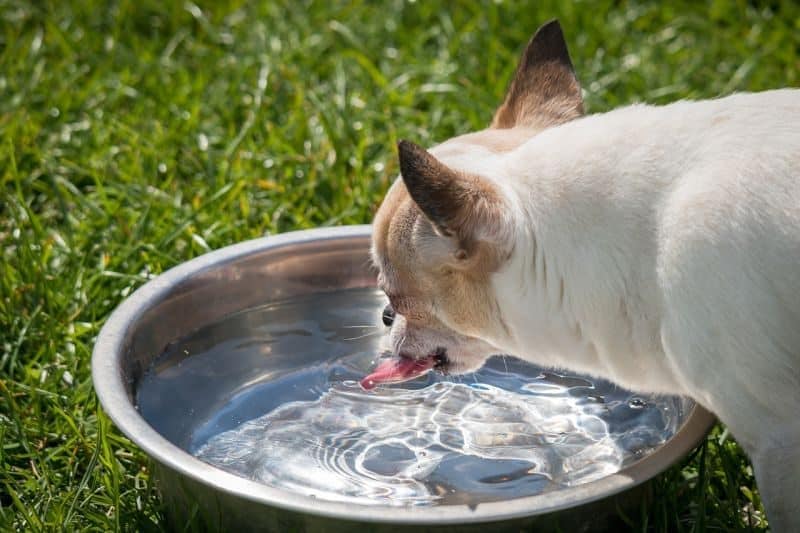
Dehydration FAQs: Common Questions About Hydrating Your Hound!
Dehydration is a serious problem, which often sparks questions for owners. We’ll try to address some of the most common questions owners have below.
Can you use Pedialyte for dogs?
Yes. Unflavored Pedialyte is safe for dogs. We’ve written about giving dogs Pedialyte before, so be sure to check out our dog Pedialyte guide here!
Why is my dog throwing up water after drinking?
Dogs who drink too much water too quickly often vomit up water. Try to avoid this problem by giving your dog small quantities of water over time.
Can dog dehydration lead to death?
Unfortunately, yes. Serious dehydration is a medical emergency, which requires prompt veterinary attention.
What if my dog is not drinking water and he’s acting lethargic?
If your dehydrated dog will not drink water or exhibits any signs of serious dehydration (including lethargy), contact your vet at once.
How can you rehydrate a dog who won’t drink?
If your dehydrated dog won’t drink, you’ll likely need to seek prompt veterinary care. Your vet will likely set up an IV line, which will pump fluids directly into his body.
Can you inject Pedialyte into a dog?
Absolutely not. Your vet may administer intravenous or subcutaneous fluids to your dog, but this isn’t something owners should do – at least not without your vet’s guidance.
Can you give a dehydrated dog ice chips?
Yes, as long as your dog’s teeth are healthy, and he doesn’t just swallow them whole (which could cause a choking hazard).
In fact, ice chips may help rehydrate and cool your dog, without being as likely to trigger vomiting. Just give him the ice chips slowly and one at a time.
How long can dogs go without water?
The length of time a dog can survive without water will vary from individual to individual and from one situation to the next. However, most animals will die without water within a few short days.
Nevertheless, this isn’t something to take lightly. Just make sure you give your pet constant access to water (unless you’re actively treating him for dehydration).
***
Has your dog ever suffered from dehydration? We’d love to hear about your experiences! Tell us how you addressed the issue, and how long it took your dog to start feeling like himself again.
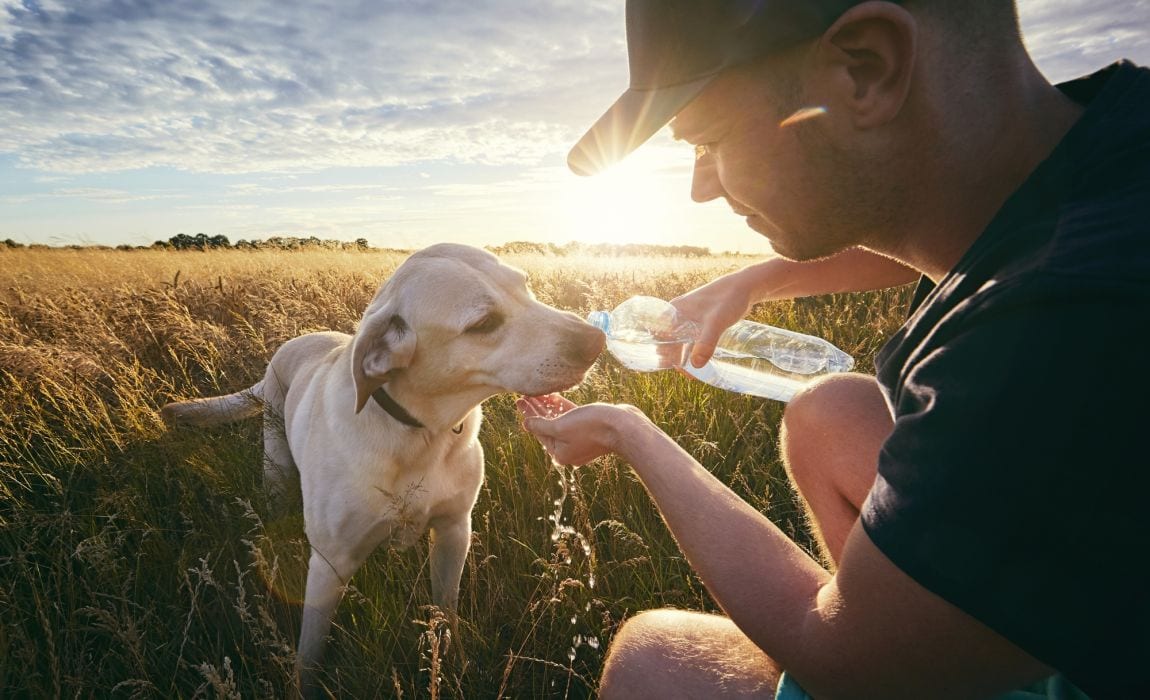

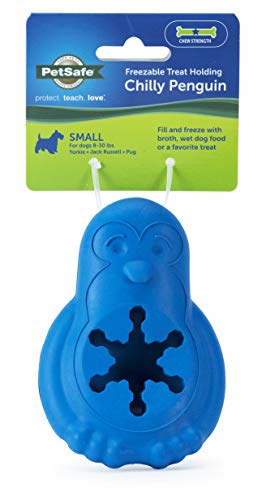




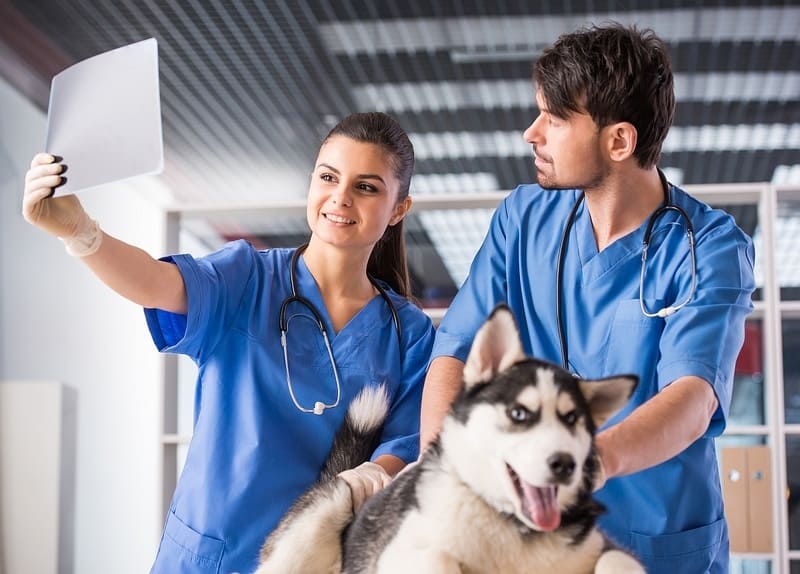

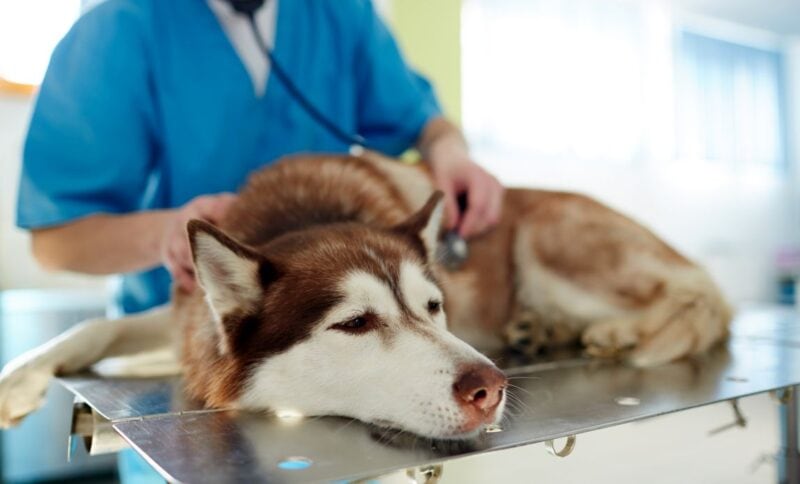

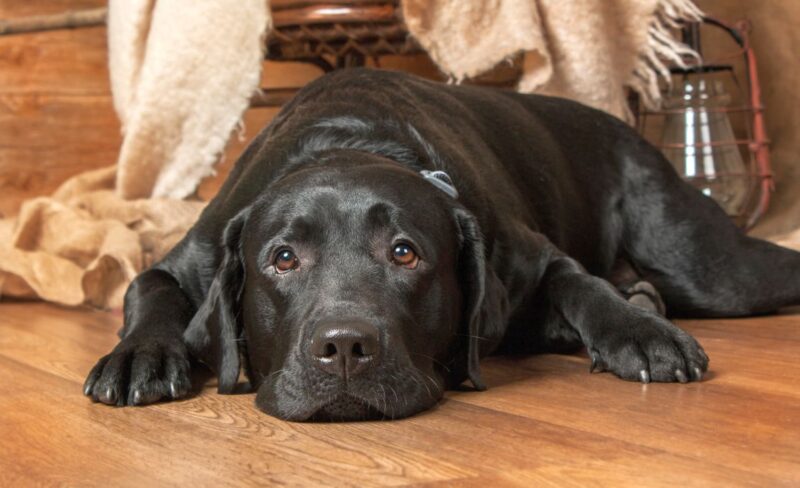
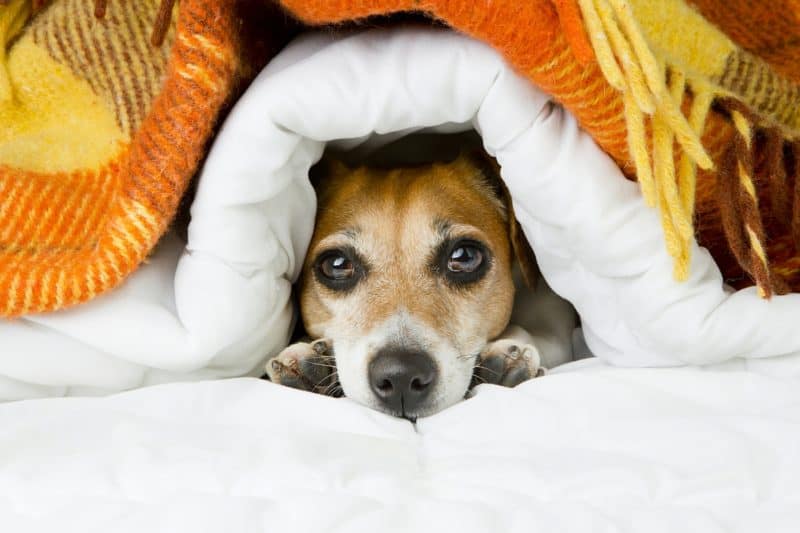
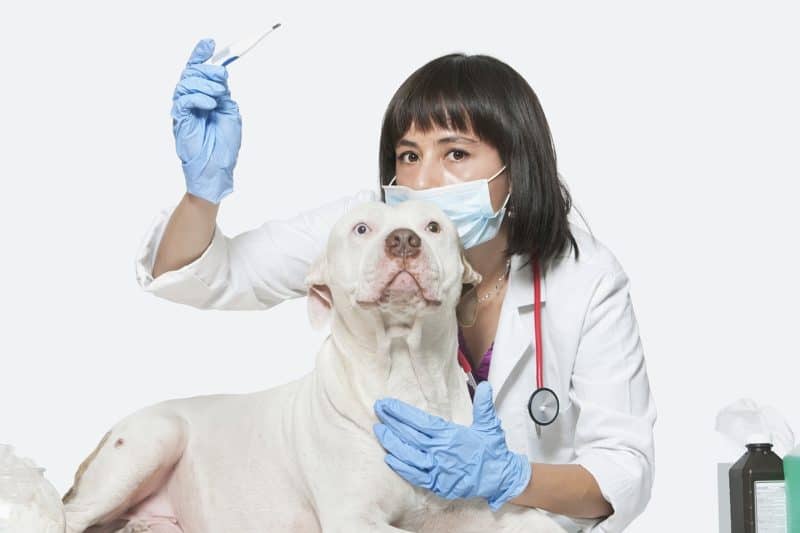

Leave a Comment